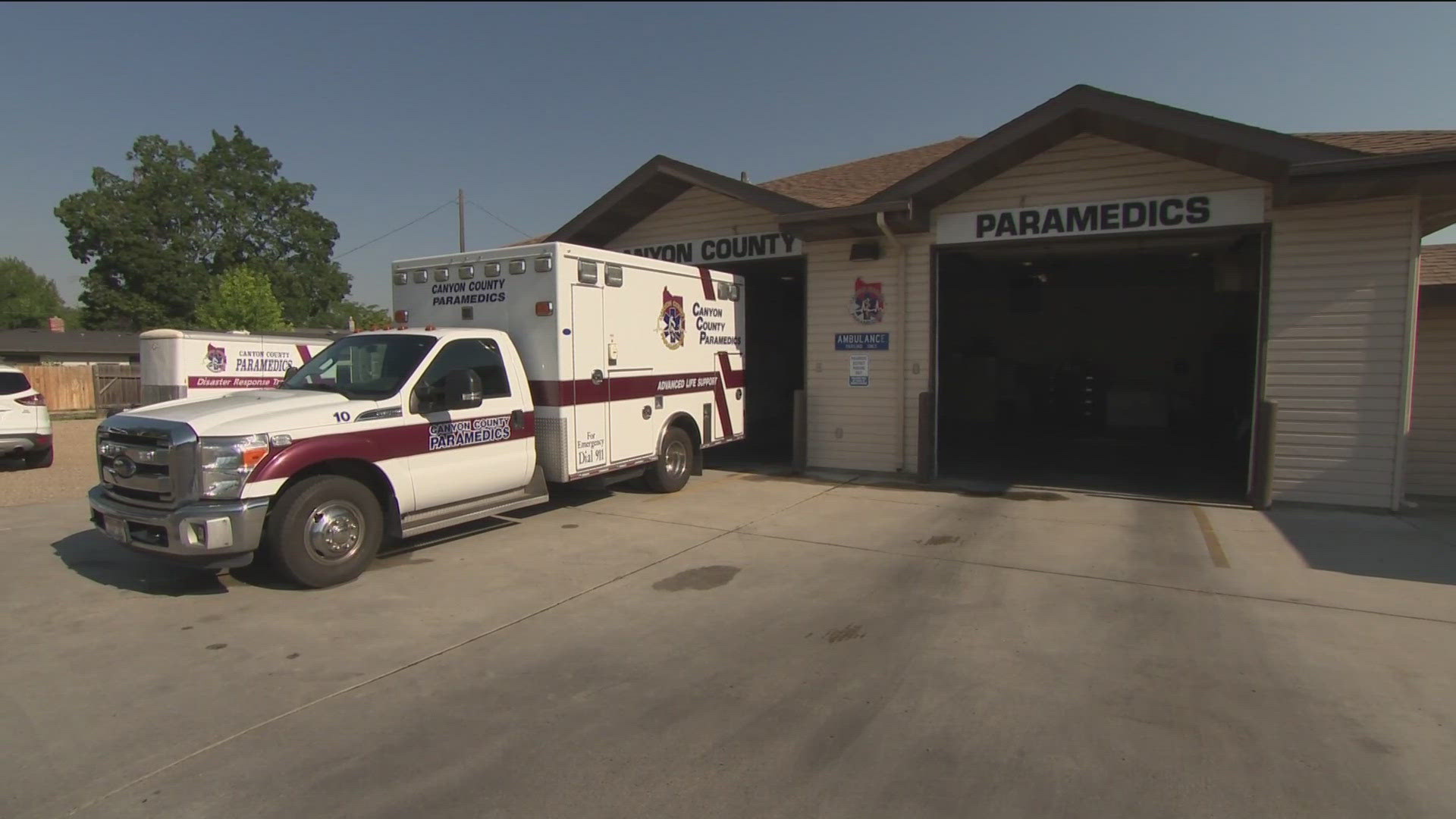CANYON COUNTY, Idaho — It's summer, which means more vacation requests and more traveling. Combine that with the 100 deadliest days, when there is a spike in fatal and serious car crashes. It's leaving Canyon County Paramedics looking for help for themselves.
If you remember, in May, paramedics tried to get voters to pass a levy that would have paid for additional staff, pay increases for current staff, a new station to supplement new growth, call demands, and updating the old buildings they currently have.
They tried and failed.
Because that levy did not pass, crews are struggling to meet the demand, creating slower response times due to the lack of staff available.
Canyon County Paramedics Chief Michael Stowell said they are understaffed, overworked and underpaid.
"We are understaffed by four employees, we've chosen not to fill those staff positions, we're leaving them open, because for fiscal 2025, we have to balance our budget without using fund balance," said Stowell. "This is a super busy time of the year with people out on vacation, call volumes are high, sick work and comp time."
Thomas Madsen is a Canyon County Paramedic and the Employee Association President.
"It's because that lower pay, a lot of our staff have to have second jobs," said Madsen.
It's a combination the Canyon County Paramedics know all too well.
Stowell said there should be eight to nine ambulances available to meet the current needs, but this week, they were far from that. On Sunday, only five ambulances were available. On Tuesday and Wednesday, there were only six.
There was a pedestrian hit-and-run and a car crash where crews were delayed in getting to the scene because they were across town or helping in another emergency.
"It's called level zero," said Madsen. "Level zero is when no units are available."
It means if you have an emergency, you might have to wait your turn because all the units are out helping other people or there's not enough people to staff an ambulance.
"You have the trauma, you have the deadliest 100 days," said Stowell. "It is a busy time of year and so with shutting down units, there's going to be longer response times. Time is of the essence to get you to definitive care. Not every 911 Call is going to be life and death, but those critical ones, yes, time matters."
The Canyon County Ambulance District doesn't get funding like firefighters. It gets 30% of its funding from taxes. The other 70% comes from when the patients use the ambulance and are charged for that service.
A big challenge came in 2002, when Medicare lowered the cost for users and funding for Canyon County also went down.
Then, after May's levy didn't pass, the crews were put in a tight spot.
The $8 million levy would have updated current stations, add new vehicles, more staff, higher pay, build a new station to fill the gap in services, and rebuild the south Nampa station which will soon be torn down.
Now, in order to combat the low staffing, 14 paramedics are breaking up their shifts with more staff during the day and fewer at night.
Stowell said the funding model is not keeping up with all the growth in the area, and in the last five years, calls increased by 20%.
"That gives us the ability to try to have more ambulances up during the day, it does not guarantee that we will never shut a unit down," said Stowell. "It just helps us to try to not shut them down during the day when the call volume is higher."
The strain remains, and now they are trying to get creative to lower the cost of a new levy.
"We are going to run again in November," said Stowell. "The needs are still there."
It would need to be passed by voters and, if passed, wouldn't go into effect until 2026.
The longer they wait, they said, the more challenging it is to save lives.
"We need that help to make sure that all our patients are safe, but we're safe and also our other first responder agencies like the fire department and police departments are safe when they have to wait," said Madsen. "It can cause problems with the patients and with the providers as well."
Inadequate EMS funding is a state-wide problem and many EMS groups in the area are looking to pass a levy as well.

